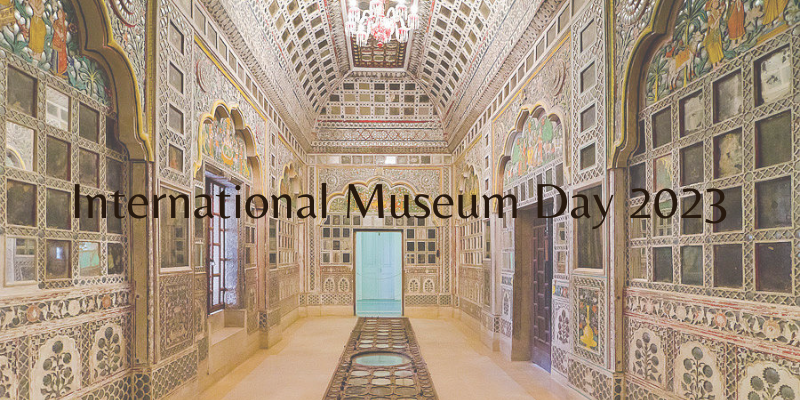Vaishnavi Srivastava
Be it art, a source of historicity, or a place of leisure, museums sure have a way to cater to every audience, regardless of their age in order to showcase a world of cultures in the most insightful possible way. They tell stories of past and present events and display a horizon of wonders and tragedies alike. On this day, 18th May each year, we celebrate International Museum Day (IMD) in order to appreciate and promote the significance of museums worldwide.
Ever since 1977, ICOM or the International Council of Museums have organized the International Day of Museum on the 18th of May. As per the ICOM, “Museums are an important means of cultural exchange, enrichment of cultures and development of mutual understanding, cooperation and peace among peoples.” And hence, the IMD is organised with events and exhibitions that may last an entire week. Just last year, IMD witnessed the participation of over 37k museums in 158 countries. These events aim to uphold and diversify the position of museums as cultural centres while exploring conversations and masterclasses that are surrounded around various aspects of museums.
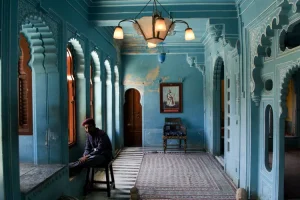
Courtesy: Getty Images Ayan82
The theme of International Museum Day 2023, is “Museums, Sustainability and Wellbeing”, this essentially pertains to the fact that our communities’ well-being and sustainable growth are significantly influenced by museums. They are ideally situated to provide a cascading effect to promote positive change since they are dependable institutions and of crucial significance in our society. The Sustainable Development Goals can be achieved in many different ways, from promoting inclusivity and promoting climate action to addressing social isolation and enhancing mental health.
India too is hosting The International Museum Expo from 18th -20th of May 2023, at Pragati Maidan in New Delhi with a wide range of masterclasses and cultural programmes divided meticulously over the span of this 3-day event.
**
A Brief History of Development of Museums in India
On this significant day of the year, it is crucial to enhance our knowledge of the origins and development of museums in our country. The growth of Indian museums can essentially be divided into five distinct phases: the Formative Phase (under Colonial Rulers) from 1796 to 1858, the Second Phase (the Victoria era) from 1858 to 1899, the Third Phase (the era of Lord Curzon and John Marshall) from 1899 to 1928, the Fourth Phase (pre-Independence era) from 1928 to 1947, and the Fifth Phase (post-Independence era) from 1947 to 2017.
The British civil servants in India who had witnessed the museum movement in their own nation inspired the Indians with their ardent leadership throughout the formative phase. The development of museums was also aided by the assistance of the Indian princely states and the gifts of collections from scholarly philanthropic organisations. By opening site museums at excavated sites, the Archaeological Survey of India (ASI) emerged, strengthening the museum movement. During this time, John Marshall and Lord Curzon made significant contributions.
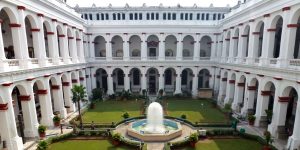
Courtesy: Kolkata Tourism
The Victorian era, often referred to as the Second Phase, lasted from 1858 to 1899. The advancement of the museum movement was briefly impeded after the British took over from the East India Company’s rule of India. However, the opening of the Indian Museum in Kolkata in 1878 was a key turning point because of Queen Victoria’s proclamation to conserve India’s cultural history. Several additional museums, notably the Victoria and Albert Museum in Mumbai (now known as the Dr Bhau Daji Lad Museum), and museums in other princely states were also founded during this phase.
Lord Curzon and John Marshall made significant contributions during the Third Phase, which ran from 1899 to 1928. As the Governor General of India, Lord Curzon understood the need of protecting the nation’s cultural legacy and suggested reviving the position of Director General to oversee archaeological activities. In 1902, John Marshall was chosen to serve as the new Archaeological Survey of India’s Director General. At various archaeological sites across India, a number of site museums were constructed under their direction.
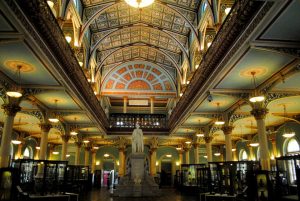
Courtesy: Tripoto
The Central Asian antiquities museum opened in New Delhi in 1929 during the Fourth Phase, the pre-Independence period from 1928 to 1947, which saw the establishment of new museums under the Archaeological Survey of India. During this time, civic and business organisations also contributed to the establishment of museums.
The fifth phase spans the years 1947 to the present following independence. After independence, the development of new museums, the protection of cultural assets, and the promotion of art and history all contributed to the growth and evolution of the museum movement in India.
**
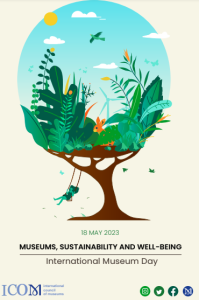
Courtesy: ICOM
The 2023 IMD focuses on three out of seventeen primary goals from the sustainable development goals provided by the United Nations as ICOM believes, “all museums have a role to play in shaping and creating sustainable futures”. The three goals are:
- Global Health and Wellbeing: Ensure healthy lives and promote well-being for all at all ages, in particular concerning mental health and social isolation
- Climate Action: Take urgent action to combat climate change and its impacts, adopting low-carbon practices in the Global North and mitigation strategies in the Global South.
- Life on Land: Protect, restore, and promote sustainable use of terrestrial ecosystems, amplifying the voices of indigenous leaders and raising awareness on the loss of biodiversity.
Finally, how can you as a citizen, find ways to appreciate and promote the existence of museums? Well, the task is simple, try and incorporate a visit to a museum into your weekly or even monthly schedule. Talk to friends, and encourage your kids as there is no education that is complete without a visual representation and a site visit or a trip to an art gallery can help broaden your as well as your kids’ horizon and depth of knowledge. Most importantly, follow sustainable lifestyles, as there will be no museums left to appreciate if we leave our planet unsustainable.
References
https://icom.museum/en/international-museum-day/
https://www.igntu.ac.in/eContent/BA-AIHC-04Sem-DrManojJain.pdf

